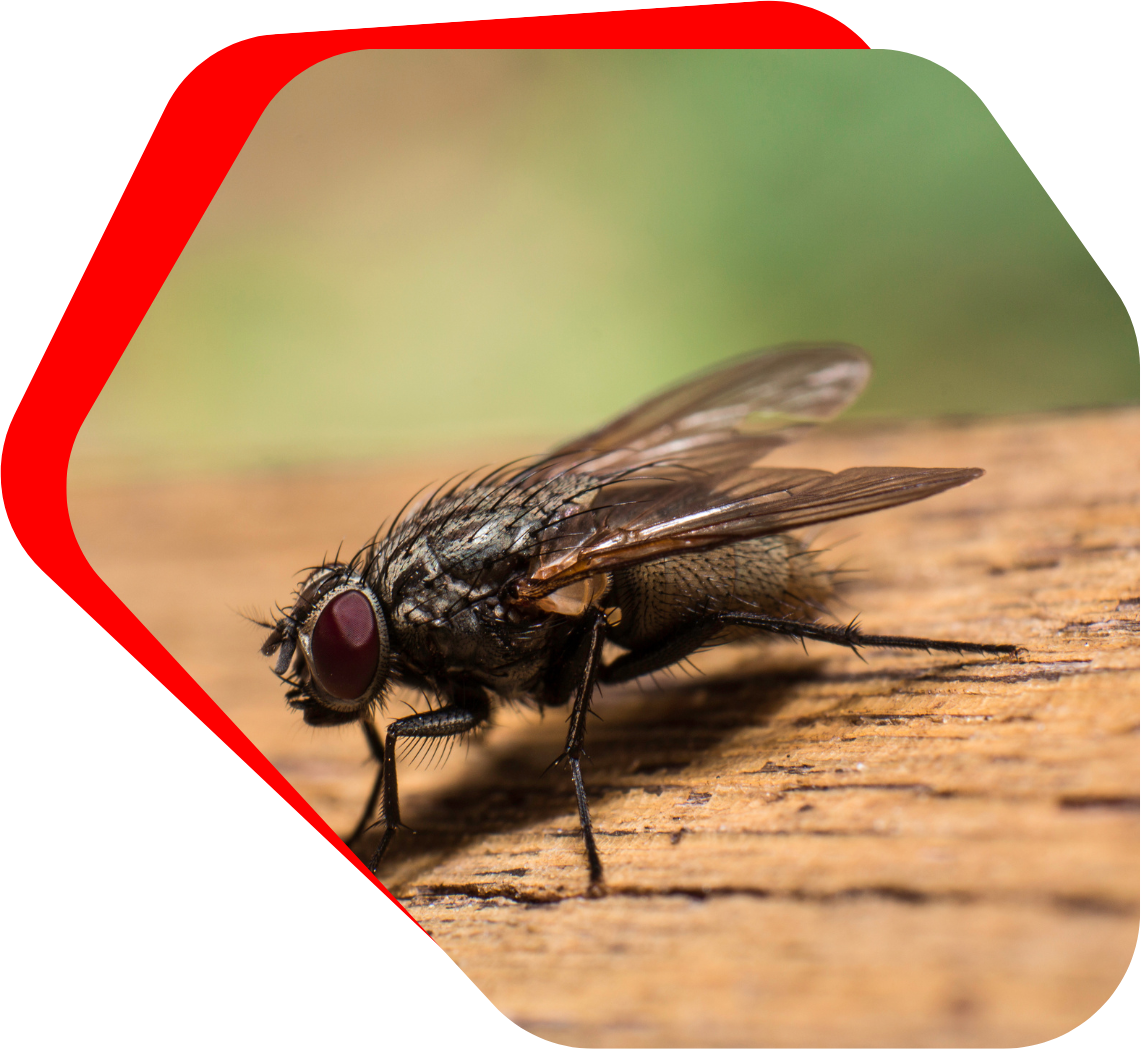Baltimore, like many regions, has its fair share of fly species. Some of the most common ones include the House, Fruit, and Horse Fly. The House, as its name suggests, is a frequent indoor visitor. They're attracted to food, waste, and other organic materials, making your home a prime location for them. The Fruit is smaller and is predominantly attracted to ripe, rotting, or decayed fruit and fermented goods. The Horse, on the other hand, are not just limited to rural areas; they can make their presence known in urban settings and can deliver painful bites.
At first glance, they might seem like a mere nuisance. However, they're more than just irritating pests. They are carriers of diseases. As they move from trash, feces, or decaying matter to our food or living spaces, they transport harmful bacteria and pathogens. Salmonella, E. coli, and even certain types of worms are just some of the diseases and parasites that flies can bring into our homes. Apart from health risks, flies can also damage goods, particularly in businesses, as they contaminate food products, leading to financial losses and potential reputational harm.
One might wonder, how can such a small creature be so prolific? Well, here are some intriguing facts:
- Rapid Reproduction: A single pair can produce more than a million offspring in a matter of weeks under the right conditions.
- Sharp Vision: They have compound eyes, giving them nearly a 360-degree field of vision. This is why they are adept at avoiding swats.
- Flexibility: Flies don’t have lungs like humans. They breathe through tiny tubes called tracheae which they can open and close. This adaptation allows them to survive in a variety of conditions.
Many homeowners resort to do-it-yourself methods. From homemade traps using sweetened water to ultraviolet light traps, there are numerous DIY remedies. But here's the catch: most of them are ineffective in the long run. For instance, while a DIY trap might capture a few, it won't address the root cause of the infestation.
Furthermore, some DIY remedies can even backfire. Using insecticides without proper knowledge can lead to potential health hazards, especially if areas of the home are improperly treated or if residues linger on surfaces where food is prepared. Ineffective treatments can also lead to increased resistance in fly populations, making subsequent treatments even more challenging.
With the health risks and potential damage flies can cause, it’s clear that effective fly control is not just a luxury, but a necessity. This is where Rosenbloom Pest Control steps in. Our trained professionals have a deep understanding of the species found in the Baltimore area and can develop tailored solutions that not only tackle the immediate problem but also prevent future infestations.
Our treatments go beyond mere extermination. We identify the root cause of the infestation, be it specific attractants in your home or areas of stagnant water outside. By addressing these fundamental issues, we ensure that once they are gone, they stay gone. Contact us today for an estimate.
Frequently Asked Questions
Q1: I've noticed that they seem particularly active during certain times of the day. Why is that?
A1: Great observation. Flies, especially house flies, are diurnal, meaning they're most active during the day. Their peak activity usually occurs during the warmer parts of the day, typically in the early morning and late afternoon. This is because, while they thrive in warm conditions, the extreme midday heat can be detrimental to them. As the sun sets, their activity decreases, and they tend to rest in corners or on ceilings to conserve energy for the next day.
Q2: I've read that they taste with their feet. Does this mean they're leaving behind contaminants every time they land?
A2: Indeed, flies do "taste" with their feet. Their footpads, known as tarsi, contain chemosensory cells that help them detect chemicals found in the food they land on. When a fly lands on various surfaces, including food, they not only "taste" the surface but may also deposit tiny amounts of whatever they previously landed on. This can include bacteria or other contaminants, and it's one of the primary reasons why they are considered such significant carriers of diseases.
Q3: My home is clean, but I still have flies. Could they be attracted to something outside of my home?
A3: Absolutely. While maintaining cleanliness inside your home is crucial, they can be attracted to various external factors. For instance, if you have compost piles, uncovered trash bins, or even pet waste in your yard, these can serve as significant attractants for flies. Nearby water bodies or marshy areas can also be breeding grounds for certain species. Regularly inspecting and addressing these external factors can play a pivotal role in reducing attractions and potential infestations.

